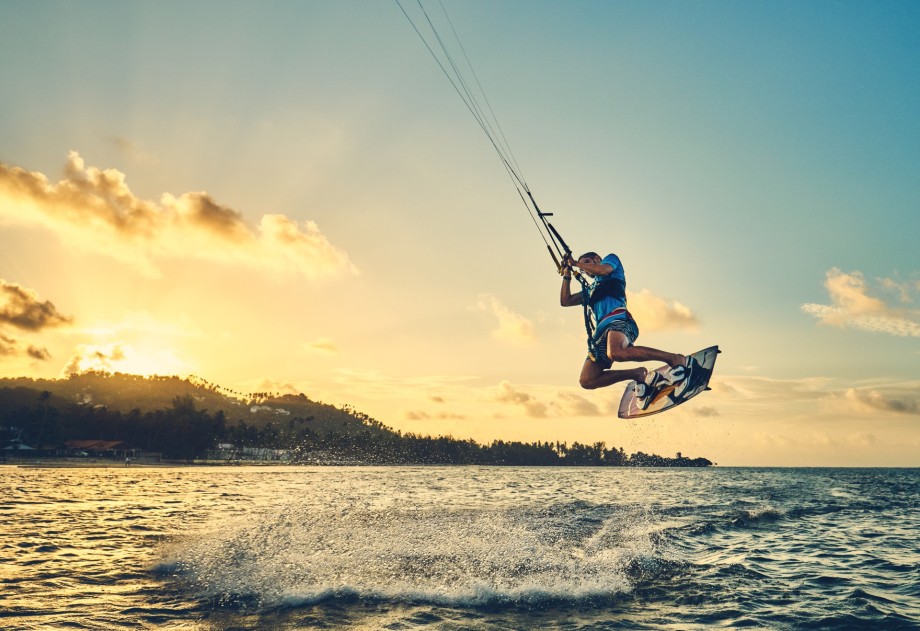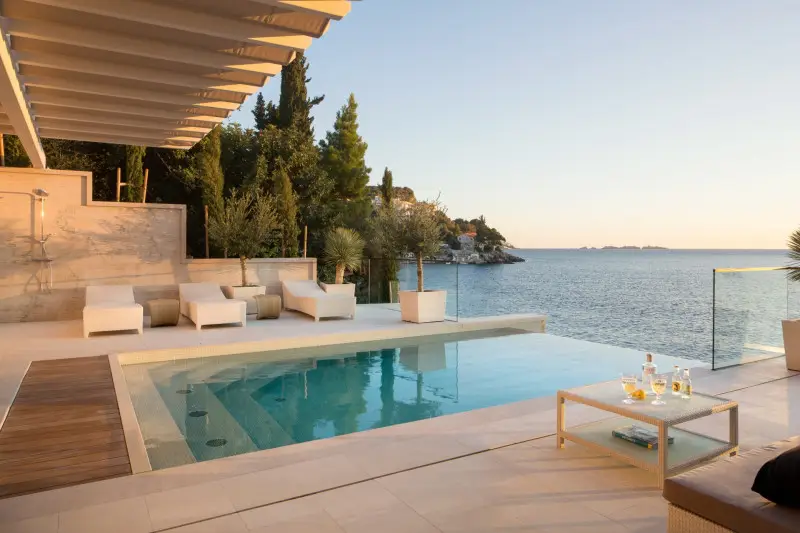
Pool maintenance - how to maintain a pool?
Pool maintenance - how to maintain a pool?
Regardless of the type of pool and the material from which it was built, as well as the fact whether it is a luxury villa for rent or just a simple holiday home with a pool, all have in common that the water in the swimming pool MUST be correct and that the pool must be regularly and properly maintained.
Water quality
The water quality and the pool's cleanliness are the main things if you want you and your guests to be satisfied on vacation and enjoy the pool relaxing without any health problems. Water in swimming pools is subject to very rapid pollution and external influences that can lead to a decline in water quality, so it is essential to regularly and properly maintain the pool.

Preparing the pool for the season
Most pools are used seasonally, but for both seasonal and year-round pools, we suggest a general cleaning in the spring. Drain the water from the pool if you keep the pool filled with water during the winter. Sweep the pool and remove any large accumulations of dirt. Open all drains in the engine room, on filters and pumps. Get specialized means for general pool cleaning. Regardless of the material the pool is made of, today, there is a wide range of products for general cleaning. Apply the agent and rinse the pool thoroughly with a high-pressure cleaner. For larger dirty pools, repeat the procedure.
After you have cleaned the pool, go to the engine room. Open the pump and clean the prefilter, pump, and other parts of the engine room.
After cleaning everything, close all the valves and prepare the pool for filling with water. Put Algicide in the pool. Algicide is an agent against the formation of algae. When you have done that, the pool is ready to be filled with water.

The first activation of the pool
After you have filled the pool with water, it is ready to turn on and work. Before turning on the pool, do some other preparations. Inspect the engine room for any water leaks and repair any possible problems. Always start the pool in such a way that its first operation is backwash, never filtration. So, the first start of your pool should be backwash for one minute and then rinse for about 10 seconds. Repeat the process once more. Only after that put your pool on filtration and turn it on. After that, adjust everything in the engine room, calibrate the ph probe, set up the electrolysis.
If it is a pool with electrolysis, add salt to the pool from which chlorine will be generated. The amount of salt depends on the size of the pool. Put 5 kg of salt in 1 m3 of water. So, 240kg of salt goes to some kind of average pool of size 8m (length) x 4m (width) x 1.5m (height) = 48m3. In addition to adding salt, it is also necessary to shock the pool with chlorine-hyperchlorination at a ratio of 20g/m3.
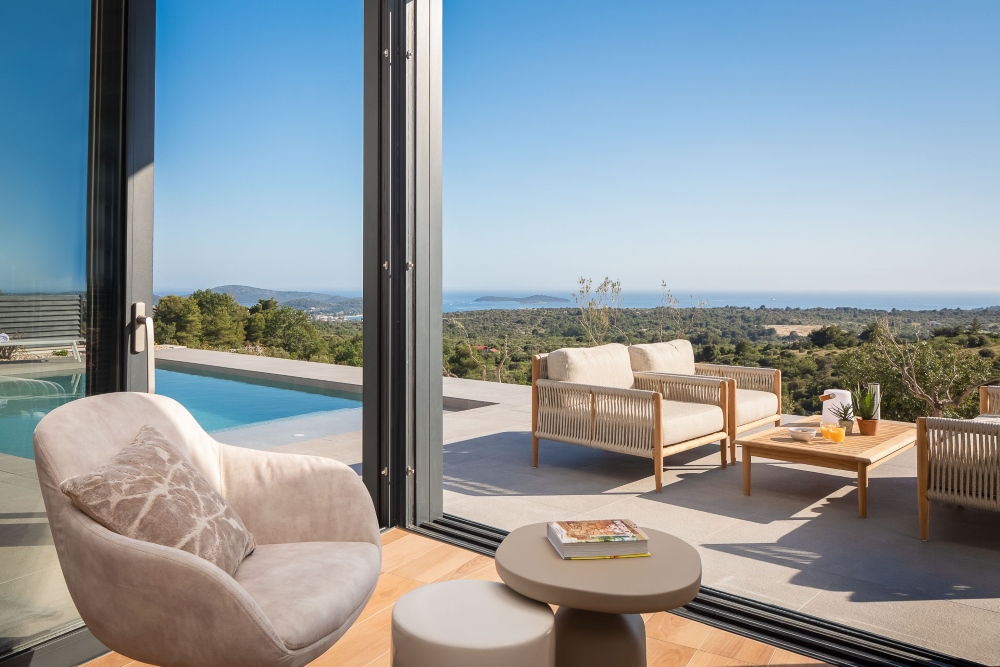
Dosing of chemicals
- Manual dosing
In order for the pool water to be correct, it is necessary to ensure that the amount of free chlorine in the water is up to 1.02 mg/l, which is ensured by adding chlorine in the ratio of 2g/m3 and continuously reading the chlorine level. In addition to chlorine, we recommend putting multifunctional tablets in the pool, which are placed in the pool skimmers, one tablet (200g) per 30m3, and two tablets for larger pools.
In addition to chlorine, it is also necessary to maintain the ph value of the water correctly. The optimal ph value is between 7.2 and 7.6. If the ph value of the water rises above 7.6, it is necessary to use ph minus means to reduce the ph value in the ratio specified by the manufacturer.
- Automatic dosing
With automatic dosing, it is necessary to set and calibrate all values and devices. After that, there is no need for additional manual injection of chemicals, but you must do regular chlorine and ph values readings.
UV lamps
If you want exceptional water quality with as few bacteria as possible, install UV lamps for water disinfection in your pool. They are easy to install, and will contribute to a lower need for chemicals, and the exceptional safety of using the pool and the correctness of the water.
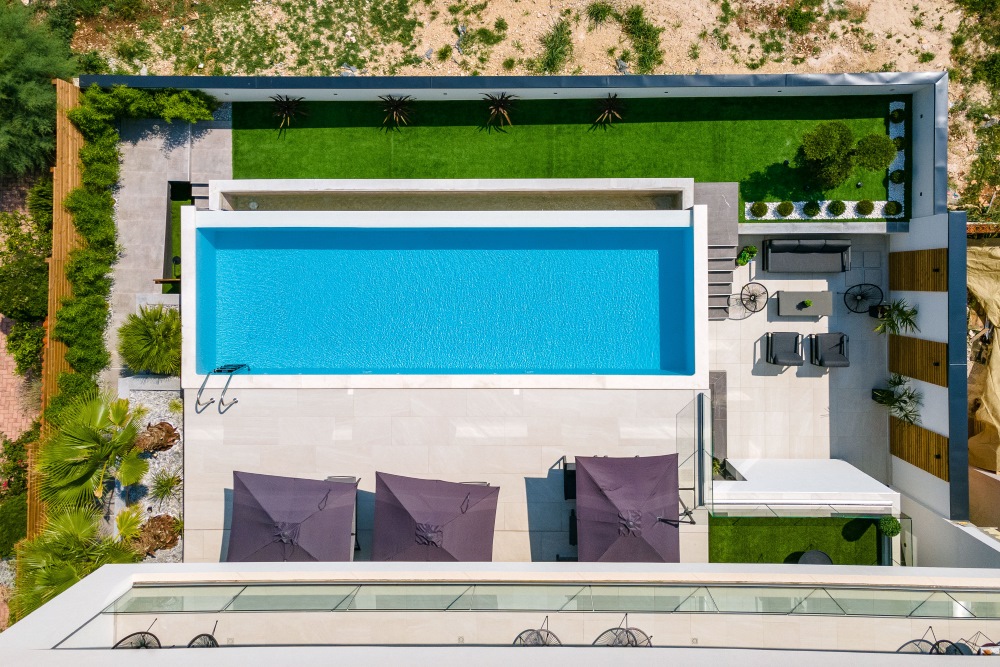
Algae in the pool
Algae in the pool is not uncommon and is not a health hazard, but it is very unpleasant to see and will probably result in guests leaving your villa. That is why it is very important that you also think about them when maintaining the pool. The higher the water temperature in the pool, the greater the risk of algae formation. For this reason, in the hot summer months, pay particular attention to ensure that you have sufficient chlorine levels in the pool, and that, if necessary, you put multifunctional tablets and an algicide that prevents the formation of algae. In addition, it is very important that the pool filtration is turned on for a minimum of 12 hours a day, especially during the day and the hottest parts of the day.
What if the pool turns green or becomes cloudy?
If the pool becomes cloudy or already green, don't panic. Follow these steps, and your pool will soon have clear and healthy water:
- Turn off the pool heating if it is on, and if you have cooling, turn on the cooling and set the desired temperature to 25 degrees
- If algae has gathered at the bottom of the pool, vacuum the pool and be sure to backwash and rinse afterward. If necessary, repeat the procedure again.
- Turn on filtration 24/7 to run non-stop
- For automatic pools, increase the chlorine production and check the salt level and then shock the pool with more chlorine. For manual pools, also shock the pool with a larger amount of chlorine.
- Put multifunctional tablets in all skimmers and algaecide directly in the pool
- Fill the pool with fresh water
After a few hours, you should notice a miraculous recovery in your pool. The whole process can take up to 24 hours. If necessary, vacuum the pool and backwash several times during this period. Be sure to prohibit guests from swimming until the water is clear and the chlorine level in the pool is reduced.
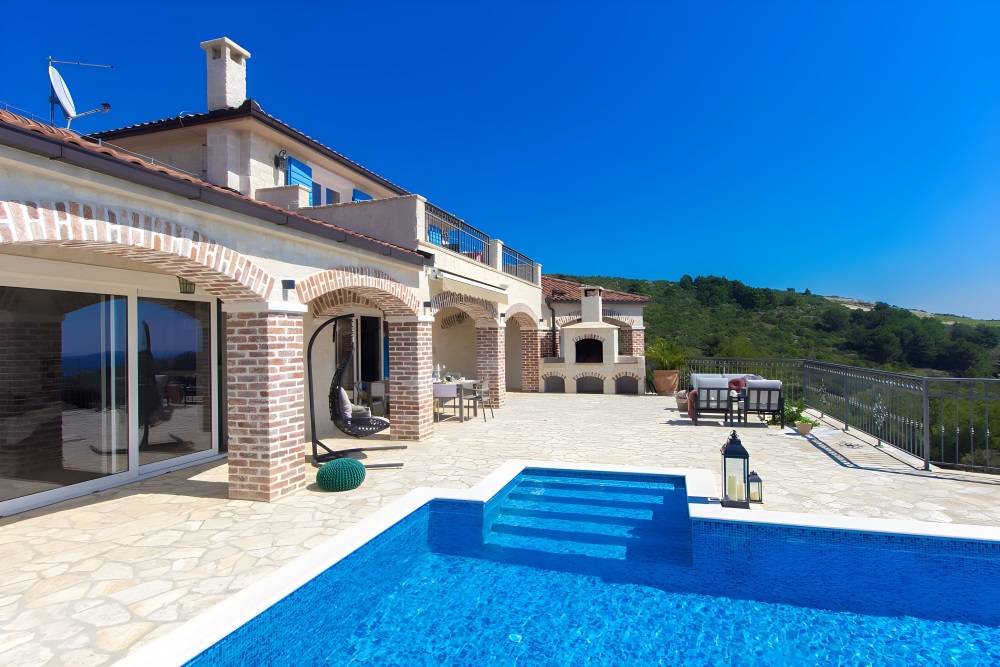
Pool cleaning
The pool needs to be cleaned regularly. In case of major external influences, regularly remove leaves and other impurities with a net and vacuum at least once a week. Once a week, you must clean the filter - backwash, and clean the prefilter of the water pump. Clean the edge of the pool with a sponge and a special agent (RANDKLAR).
In addition to manual cleaning, pool cleaning robots are becoming increasingly popular today. As a rule, more expensive is better. Avoid buying cheaper robots that won't be of much help to you.
Closing of the pool
After the swimming season ends, it is very important to properly prepare the pool for the winter off-season. We will base ourselves on concrete and ceramic pools. The eternal dilemma is whether to leave or empty the water. Our advice is to make sure to drain the water from your pools. Drain the water from all installations, pipes, filters, pumps, etc. Leave all valves open so that rainwater can flow freely. Protect the pump and other parts of the pool from freezing. Sweep the pool regularly and keep it clean of leaves and other large impurities.
Pool usage rules
The way the pool is used plays a big role in the longevity of the pool itself, as well as the quality of the water and the cleanliness of the pool. For this reason, we advise you to clearly highlight the signs of pool use, which should include:
- Mandatory showering before and after using the pool. This is perhaps the biggest problem when using the pool, because most users do not shower before using the pool, but enter the pool with sunscreen. Because of this, the edge of the pool can be very dirty.
- Prohibition of throwing objects into the pool, especially food and drinks and paper and wet towels
- Prohibition of defecating in the pool, especially children who are prone to it.
See below some of the most beautiful villas with swimming pools in Croatia that we have in the Home Rent offer:
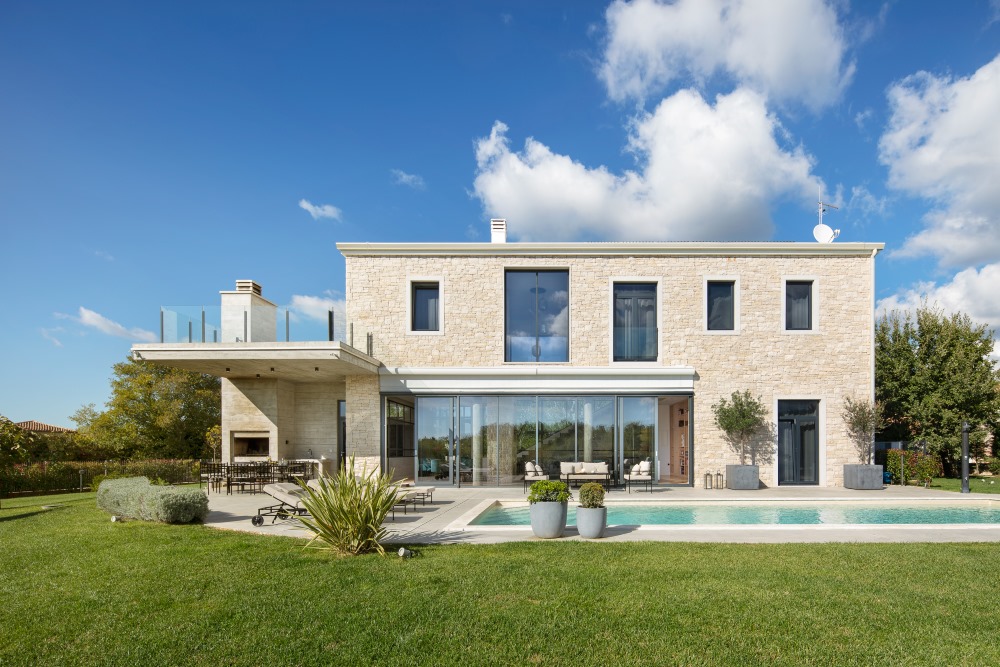
Beautiful villa in Istria. A large private and heated swimming pool for complete enjoyment in swimming and sunbathing.

A luxurious and enchanting villa right next to the sea. A wonderful swimming pool just a step from the sea for complete pleasure and hedonism.
Croatia Travel Blog



